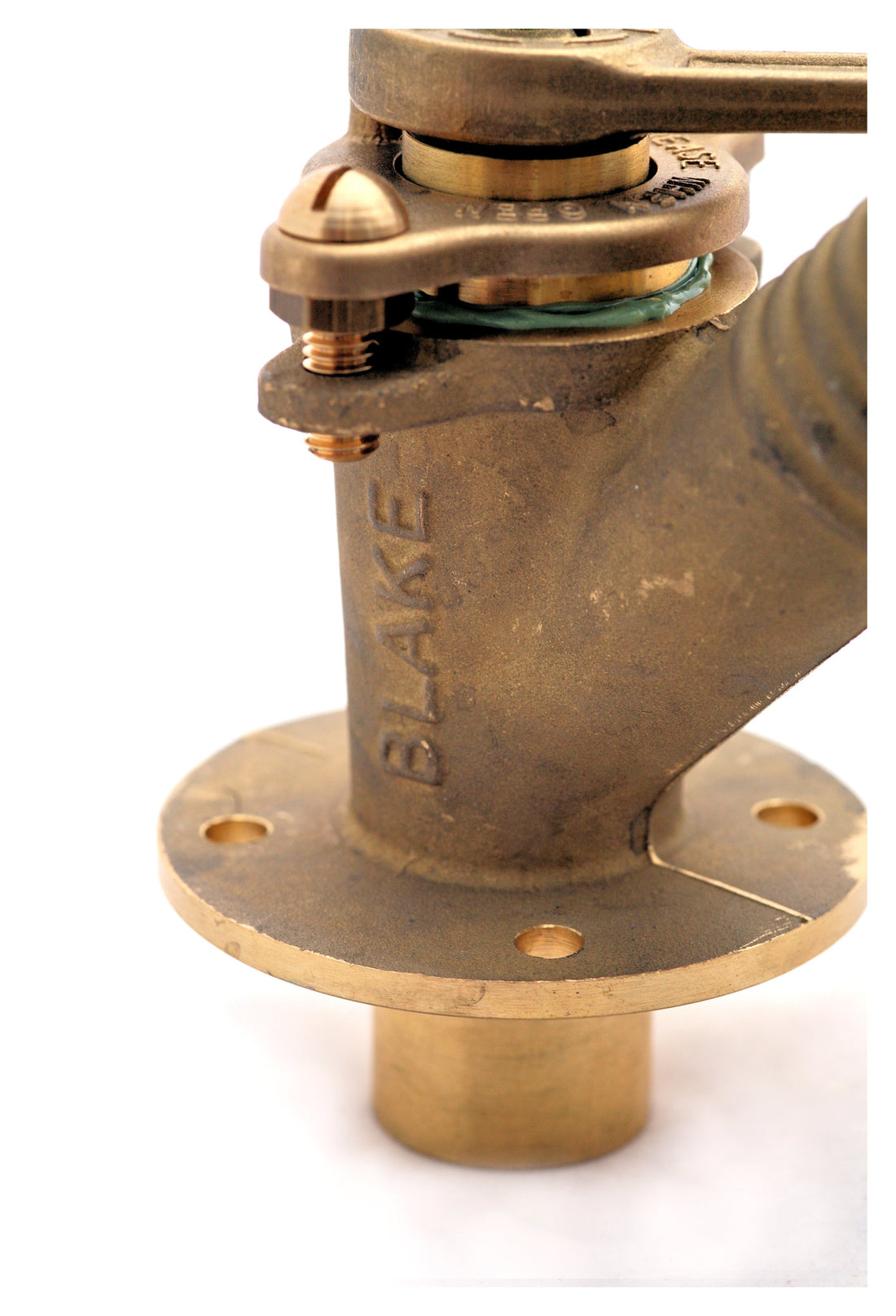
Sitting and Installing the Seacocks
Share
Having Chosen the type of inlet and discharge seacocks required for your particular needs, they should be mounted in the hull. We recommend Blakes Seacocks for use with our marine toilets. The inlet is 19mm (3/4") and the outlet is 38mm (1 1/2"). The inlet seacock should be about 460mm (18") below the water line and forward of the discharge seacock. On a sailing vessel, the distance below the water line may have to be more to allow for heeling. The discharge seacock should also be below the waterline but need not be as deep as the inlet. The location of both seacocks should be convenient for attaching piping to and from the toilet and easily accessible for turning off. Ensure that they are positioned to accept the hoses before drilling the holes to accept the fixing bolts.
Fitting the Seacock to the Boat:
For fiber-glass boats we recommend the fitting of a wooden pad, bonded to the hull, slightly greater in diameter than the seacock flange and 13mm (1/2") to 19mm (3/4") thick. To ensure the water joints on the G.R.P. (Glass Reinforced Plastic) hulls, a small amount of underwater sealing compound should be put between the inside skin and this pad and also under the seacock flange.
For wooden hulls, ensure that the drilling is carries out in the center of a hull plank.
For steel hulls, the seacocks must not under any circumstances be bolted directly onto the hull. They should be isolated with a gasket and studded with stainless steel fittings to a pad welded to the hull. This is to prevent electrolytic action.
For aluminum (alloy) hulls, special aluminum seacocks should be used. Plastic seacocks are often used as an alternative.
Seacock spigots should be cut off to suit the outside of the hull. The inlet seacock should be flush with the outside of the hull and a strainer fitted. Similarly the discharge seacock should protrude to enable it to take the discharge plate.
